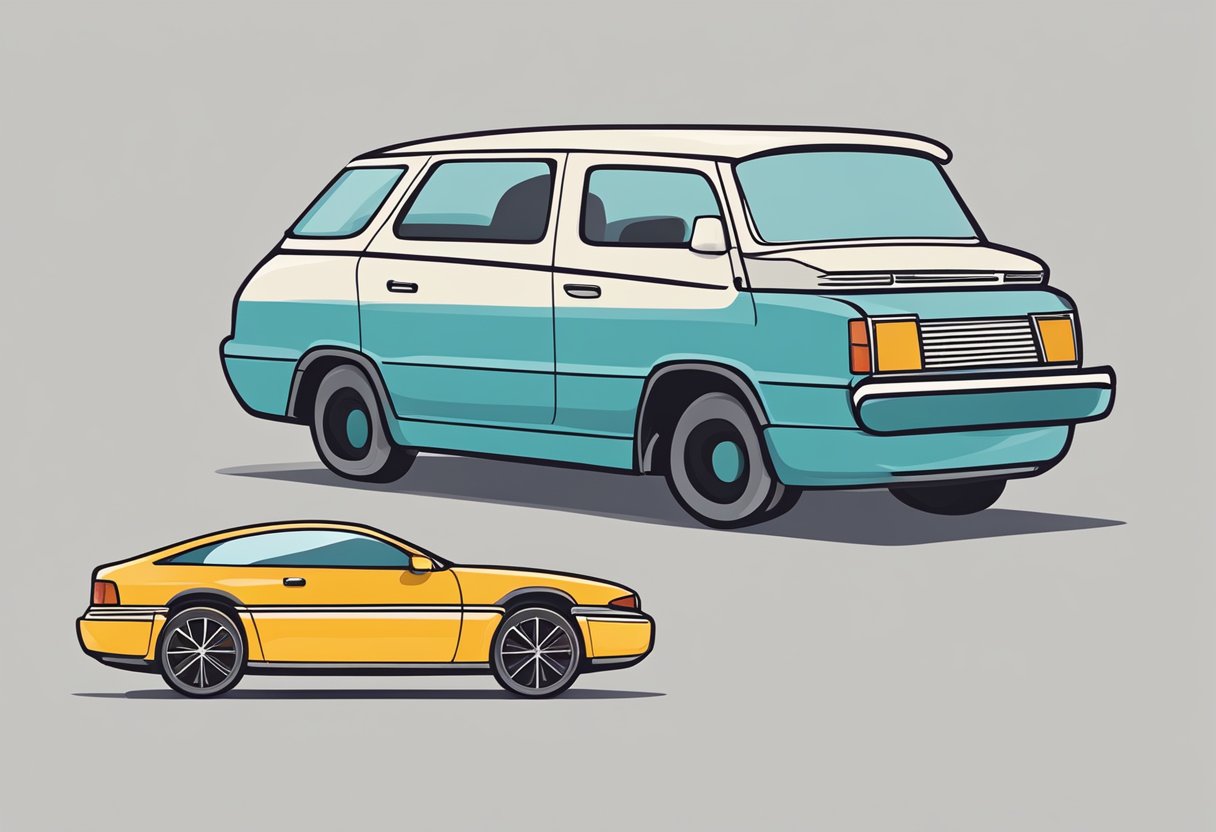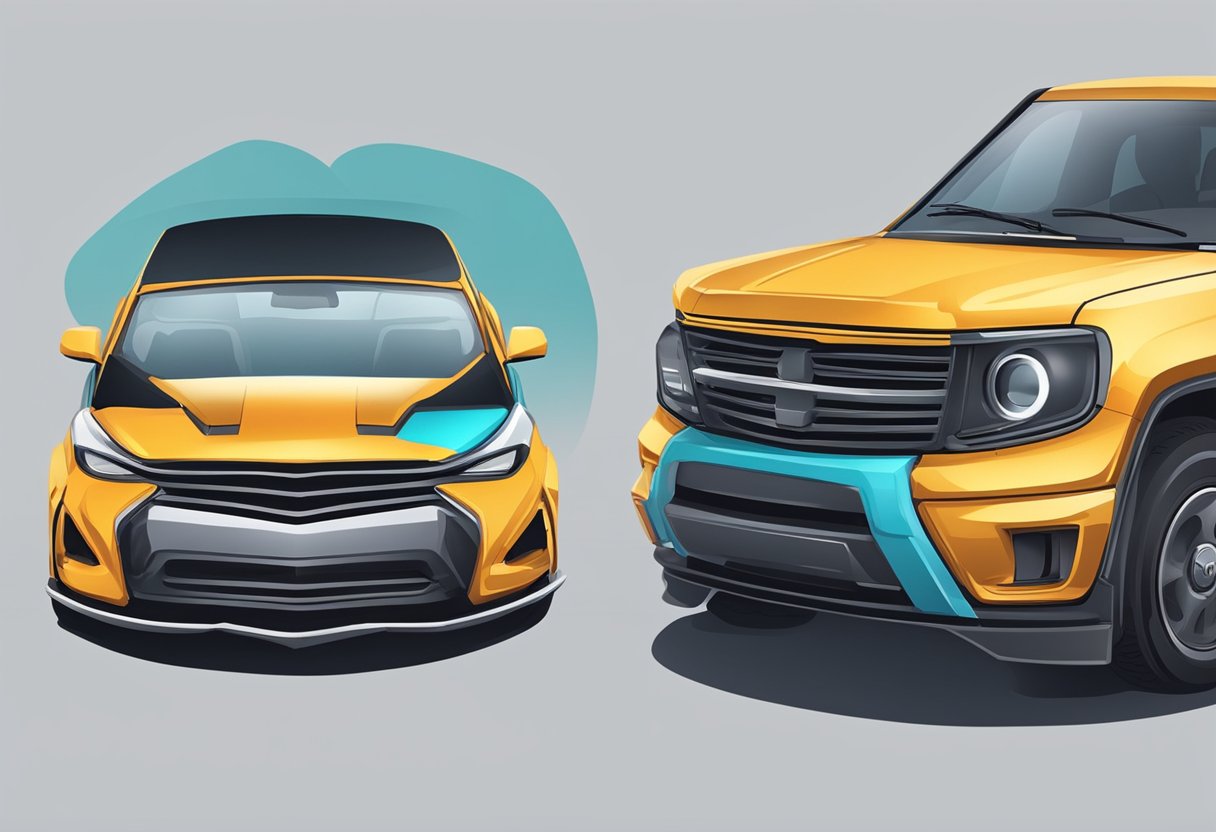When it comes to your vehicle, the bumper is an essential component that provides protection in the event of a collision. However, there are two different types of bumpers available: the full bumper and the bumper cover. While both serve the same basic function, there are some key differences between the two.
A full bumper is a heavy-duty component that is designed to absorb the impact of a collision. It is typically made from steel or aluminum and is mounted to the frame of the vehicle. In addition to providing protection in the event of a collision, a full bumper can also be used to mount accessories such as winches and tow hooks. On the other hand, a bumper cover is a lightweight component that is designed to improve the appearance of the vehicle. It is typically made from plastic or fiberglass and is mounted over the full bumper. While a bumper cover can provide some protection in the event of a collision, its primary function is aesthetic.
Defining Bumper and Bumper Cover
When it comes to protecting your car from damage in a collision, the bumper and bumper cover play a vital role. Although both are designed to absorb the impact of a collision, they differ in their material composition, structure, design, and aesthetics.
Material Composition and Structure
The bumper is typically made of steel, aluminum, or fiberglass, and is mounted directly to the frame of the car. It is designed to absorb the impact of a collision, reducing the force of the collision and protecting the car’s occupants.
On the other hand, the bumper cover is made of plastic and is designed to cover the bumper, giving the car a sleek appearance. It is not designed to absorb the impact of a collision, but rather to protect the bumper from scratches, dents, and other damage.
Design and Aesthetics
The bumper is a functional component of the car, and its design is primarily focused on safety and performance. It is typically a simple, unadorned component that is designed to be strong and durable.
In contrast, the bumper cover is a cosmetic component of the car, and its design is primarily focused on appearance and style. It is available in a wide variety of colors and styles, allowing car owners to customize the look of their car to their liking.
Overall, the bumper and bumper cover are two distinct components of a car that serve different purposes. While the bumper is designed to absorb the impact of a collision and protect the car’s occupants, the bumper cover is designed to protect the bumper from damage and enhance the car’s appearance.
Functional Differences
When it comes to functionality, there are some key differences between a bumper cover and a full bumper. In this section, we’ll take a closer look at these differences and how they impact your vehicle.
Impact Absorption and Protection
One of the primary functions of a bumper is to absorb impact and protect your vehicle in the event of a collision. A full bumper is designed to do just that, with a sturdy construction that can withstand a significant amount of force. A bumper cover, on the other hand, is primarily designed for aesthetic purposes and doesn’t offer the same level of protection as a full bumper. While a bumper cover may provide some protection against minor scrapes and scratches, it won’t be able to absorb the impact of a major collision in the same way that a full bumper can.
Aerodynamics and Performance
Another key difference between a bumper cover and a full bumper is their impact on your vehicle’s aerodynamics and performance. A full bumper can create drag and reduce your vehicle’s fuel efficiency, while a bumper cover is designed to be more aerodynamic and improve your vehicle’s performance. By reducing drag and improving airflow, a bumper cover can help your vehicle run more efficiently and get better gas mileage. On top of that, a bumper cover can help reduce wind noise and turbulence, making for a quieter and more comfortable ride.
Overall, there are some clear functional differences between a bumper cover and a full bumper. While a full bumper offers superior protection in the event of a collision, it can also create drag and reduce your vehicle’s performance. A bumper cover, on the other hand, is designed to be more aerodynamic and improve your vehicle’s fuel efficiency, but it won’t offer the same level of protection as a full bumper. When choosing between a bumper cover and a full bumper, it’s important to consider your priorities and weigh the pros and cons of each option carefully.
Damage and Repair Considerations
When it comes to damage and repair, there are a few things you should keep in mind when deciding between a full bumper or just a bumper cover. Here are some common types of damage to consider:
Common Types of Damage
Dents and scratches are the most common types of damage that occur to bumpers. In most cases, these can be repaired without having to replace the entire bumper. If the damage is minor, a simple touch-up paint job may be enough to restore the appearance of the bumper.
Cracks, on the other hand, can be more serious. If the crack is small, it may be possible to repair it with a patch or filler. However, if the crack is large, the bumper will need to be replaced.
Bumper and Bumper Cover Replacements
If you do need to replace your bumper or bumper cover, there are a few things to keep in mind. Bumper covers are typically less expensive to replace than full bumpers. This is because bumper covers are made of plastic, while full bumpers may be made of metal or other materials.
In some cases, it may be possible to replace just the damaged part of the bumper. For example, if only the bumper cover is damaged, you may be able to replace just the cover without having to replace the entire bumper.
Cost and Installation
The cost of replacing a bumper or bumper cover can vary widely depending on the make and model of your vehicle, as well as the extent of the damage. In general, replacing a bumper cover will be less expensive than replacing a full bumper.
Installation costs will also vary depending on the complexity of the job. If you are replacing just the bumper cover, installation may be relatively simple and can be done in a few hours. However, if you are replacing the entire bumper, the installation may be more complex and could take several days.
When deciding between a bumper cover and a full bumper, it’s important to consider the cost of the replacement parts, as well as the cost of installation. In most cases, a bumper cover will be less expensive to replace and install, but it may not offer the same level of protection as a full bumper. Ultimately, the decision will depend on your specific needs and budget.
How Can the Type of Bumper Cover Impact My Car’s Headlight Functionality?
The type of bumper cover on your car can impact the functionality of your car adaptive LED headlights. A bumper cover that is not properly aligned or damaged can obstruct the light output, causing issues with visibility and performance. Proper troubleshooting can help identify and address any headlight functionality issues.
What Type of Bumper Is Best for Off-Roading in a Jeep?
When considering the best type of bumper for off-roading in a Jeep, it’s essential to prioritize durability and protection. An expert analysis on Jeep prices can help determine the best investment for a high-quality, heavy-duty bumper that can withstand rough terrain and potential impacts.
What Type of Bumper Cover Provides Better Protection for License Plate Safety?
When it comes to license plate number safety, it’s essential to choose a bumper cover that provides adequate protection. A sturdy and durable bumper cover made of high-quality materials will offer better safeguarding for your license plate, keeping it secure and undamaged in various driving conditions.
When to Choose Bumper Cover vs Full Bumper
When it comes to choosing between a bumper cover and a full bumper, there are several factors that you should consider. In this section, we will discuss the assessment of vehicle needs and considerations for safety and integrity.
Assessment of Vehicle Needs
When assessing your vehicle’s needs, you should consider the type of driving you do and the likelihood of damage to your vehicle’s bumper. If you frequently drive in areas with heavy traffic or park in tight spaces, your bumper is more likely to sustain damage. In this case, a bumper cover may be a good option for you. Bumper covers are designed to protect your car’s bumper from scratches, dings, and other minor damage.
On the other hand, if you frequently drive on rough terrain or in areas with a high risk of collision, a full bumper may be a better option for you. Full bumpers are designed to absorb the impact of a collision and protect your car’s frame from structural damage.
Considerations for Safety and Integrity
When considering safety and integrity, it is important to note that a bumper cover may not provide the same level of protection as a full bumper. In the event of a collision, a bumper cover may not be able to absorb the full impact of the collision, which could result in structural damage to your car’s frame.
However, if your car has already sustained structural damage, a full bumper may not be the best option. In this case, a bumper cover may be a more cost-effective solution to protect your car’s bumper from further damage.
In summary, when choosing between a bumper cover and a full bumper, it is important to assess your vehicle’s needs and consider the level of protection you require. If you frequently drive in areas with heavy traffic or park in tight spaces, a bumper cover may be a good option for you. However, if you frequently drive on rough terrain or in areas with a high risk of collision, a full bumper may be a better option for you. Regardless of your choice, it is important to prioritize safety and integrity to protect yourself and your passengers from harm.
Enhancing Vehicle Aesthetics and Value
When it comes to the appearance of your vehicle, the bumper is one of the most noticeable components. It is not only designed to protect your vehicle but also plays a significant role in enhancing its aesthetic appeal and value. In this section, we will discuss how bumper covers and full bumpers can help to enhance the appearance and value of your vehicle.
Customization and Accessories
One of the biggest advantages of using a bumper cover is that it allows you to customize your vehicle to your liking. Bumper covers come in a wide range of styles, colors, and finishes, allowing you to choose one that complements your vehicle’s style. You can also add accessories to your bumper cover, such as fog lights, grilles, and air dams, to enhance its appearance further.
On the other hand, full bumpers are typically designed to match the vehicle’s original style and are not as customizable as bumper covers. However, some full bumpers come with integrated accessories, such as tow hooks and parking sensors, which can add value to your vehicle.
Maintaining Vehicle Appearance
Both bumper covers and full bumpers can help to maintain your vehicle’s appearance by protecting it from wear and tear. Bumper covers are typically made of modern materials that are durable and resistant to scratches and dents. They are also easier to repair and replace than full bumpers, which can be costly to fix.
Full bumpers, on the other hand, are designed to provide maximum protection to your vehicle. They are typically made of heavy-duty materials such as steel and are more resistant to damage from collisions. However, they can be more difficult to repair or replace than bumper covers, which can affect the appearance and value of your vehicle.
In conclusion, both bumper covers and full bumpers have their advantages and disadvantages when it comes to enhancing the appearance and value of your vehicle. Bumper covers provide more customization options and are easier to repair and replace, while full bumpers provide maximum protection and can add value to your vehicle.
As an Amazon Associate we earn from qualifying purchases.















